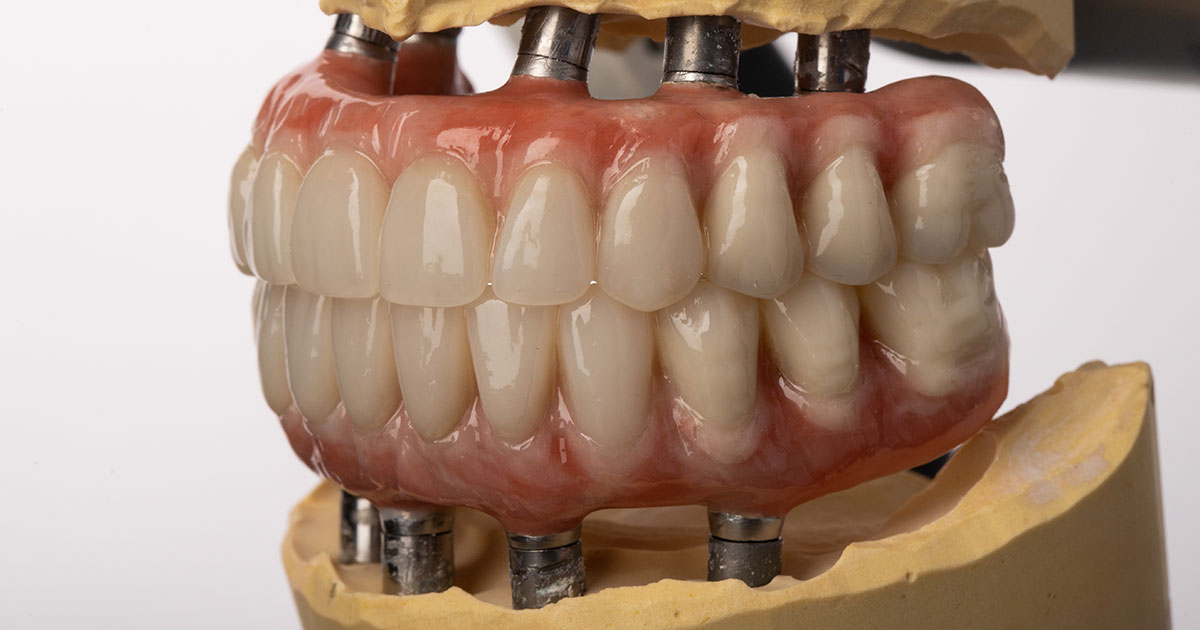Who Is a Candidate for All-On-4?
Posted On 3/2/2022 12:00:00 AM by Bruce Kanehl

Dental implants have recently risen to prominence as a top option for replacing missing teeth for several reasons, including permanence, reliability, and a more natural look and feel. Not all patients need an implant for each individual tooth in order to fix their smile. Thanks to all-on-4 implants, your dentist can repair your smile permanently, correcting multiple teeth with only four posts which will save you both time and money in the long run.
The first step in the process is for your dentist to conduct an oral examination to help determine if you’re a good fit for the all-on-4 procedure. Here are a few factors that will help you and your dentist decide whether this procedure makes sense for you.
Candidates for All-on-4
Subjects who qualify for the all-on-4 dental implant procedure fall into two classifications:
- Patients who have lost all their teeth on a dental arch (either on the upper or lower jaw)
- Patients who have a few teeth but still have their oral functions
All-on-4 is a practical procedure for patients who want a cost-effective, quick, and reliable option to replace their missing teeth. The replacement teeth are placed shortly after the implant procedure for most patients.
Another advantage of this procedure is that it is available to patients who previously failed to qualify for classic dental implants due to insufficient jawbone density. The all-on-4 method allows the dentist to place the dental implants despite a patient’s bone mass being marginally depleted.
Let’s look at the factors a dentist might consider before recommending this type of dental surgery.
1. Age Requirement
An individual must be free of any significant health issues to qualify for dental implants. The all-on-4 procedure is not recommended for certain age groups, including children, teenagers, and people in their twenties. Patients who fall into those groups are still in the development phase, meaning their jawbone hasn’t become fully formed. Typically, the late twenties’ is the minimum age to undergo this procedure. With that said, the all-on-4 procedure is more frequent and makes the most sense among middle-aged patients and seniors.
2. Density and Gum Quality
Given the efficacy of the procedure centers on osseointegration (the process through which implants fuse with the bone), subjects must have sufficient jawbone density and satisfactory gum quality to secure the dental implants; however, the amount of bone density required is not as extensive as with other procedures. If the patient has inadequate bone or gum tissue, the dentist will recommend a grafting procedure before receiving implants to enhance the hard and soft oral tissues. Notably, this step will extend your treatment timeline since the tissue needs to heal properly.
3. Good Oral Health
Conditions such as gum disease and periodontal diseases contribute to your overall oral health. These issues must be treated before you can be eligible for an all-on-4 implant procedure. In some instances, individuals susceptible to gum infections and disease may still qualify for the procedure, though there is a considerable risk of implant failure.
Other health issues that can make an individual a poor candidate for implants include:
- Uncontrolled diabetes
- Patients using antidepressant medication
- Undergoing radiation therapy
Is All-on-4 Right for You?
The All-on-4 procedure gives remarkable results that replicate the look of your natural teeth and restore functionality. In addition, the maintenance routine remains similar to your usual dental hygiene regiment. If you are considering this procedure, consult with your dentist to ensure that you are a good candidate. This will lead to a successful procedure. To learn more about whether all-on-4 implants are right for you, book an appointment with Kanehl Dental today!
Related Articles
How Can All-on-4 Replace Standard Dentures?
Published on: 1/25/2024 12:00:00 AM
Dentures are a common solution to tooth loss, but they might not be the best. All-on-4 dental implants have significant advantages without the downsides of dentures.
All-on-4 Dental Implants Step by Step
Published on: 6/13/2023 12:00:00 AM
All-on-4 dental implants are a popular alternative to dentures. We cover everything you need to know about the All-on-4 dental implant procedure.
Bruce A. Kanehl, D.D.S.
7933 Baymeadows Way #5
Jacksonville, FL 32256
(904) 731-2162
To learn more about how we can make you smile, request a consultation today.
Dr. Kanehl is one of a select few in the Jacksonville area to be a member of the American Academy of Dental Sleep Medicine and to treat sleep apnea with oral appliance therapy.




